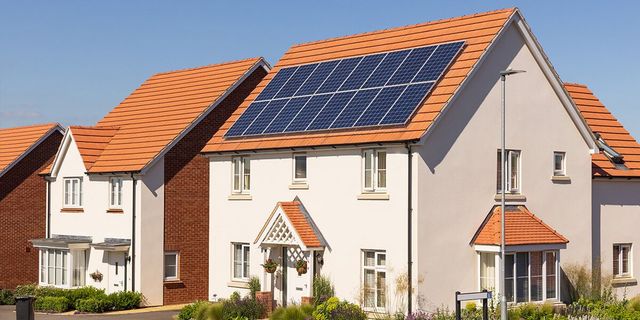Putting Solar Energy To Work – More Than Just Panels
Two exceptions I’ll note here from the beginning, nuclear and geothermal energy, the sun account for all the forms of energy in the world. Biomass,wind, waves, biofuels, and hydroelectric power all are examples of indirect forms of solar energy. If we look at the ones that aren’t nonrenewable forms of energy, like for example coal, natural gas, and petroleum are really indirect forms of energy. The reason for this is they are derived from organic matter made by the sun.
In the other hand, direct forms of solar energy can be used as the energy gets to us. Some people like to build skylights in there homes (called daylighting). But let’s focus on the two that matter to us: solar electric and solar thermal, basically they are what produce heat and electricity.
Two ways to capture thermal energy
The two types of solar thermal systems to capture the energy of the sun, active and passive. In the active solar thermal, solar panels capture the sun’s energy as heat when it gets pass the collector and transfers that heat into fluid. The fluid moves through the collectors by a fan or circulator, it can be used immediately or stored for later.
Passive solar systems work a little different, it captures the sun’s energy as it enters a building without a circulator or a fan. When it’s inside the home, the heat can be stored in the mass the building and spread between conduction, convection, or radiation, or even forced means, such as fans.
Home Solar Panels
So we know that electric and thermal provide energy in our homes. Most of the thermal panels for homes uses are of the flat-plate type. Evacuated-tube panels also are used but, they’re not as common. Solar panels or PV or photovoltaic panels or whatever you call them, are all flat-plate type. You can get flat-plate style glazed or unglazed versions. The difference is the unglazed are flexible the glazed, firm. Regardless of which you go with, the semiconductor material of the cells has to well protected from moisture. The firm solar panels are encapsulated between glass on the part where the sun hits it, but on the back just vapor impassable material.
Flexible solar electric panels don’t have glass protection, but they have a transparent, UV-resistant protector to prevent damage to the cells.
So there you have it passive, active and all the home solar panels and how to put solar energy to work.


